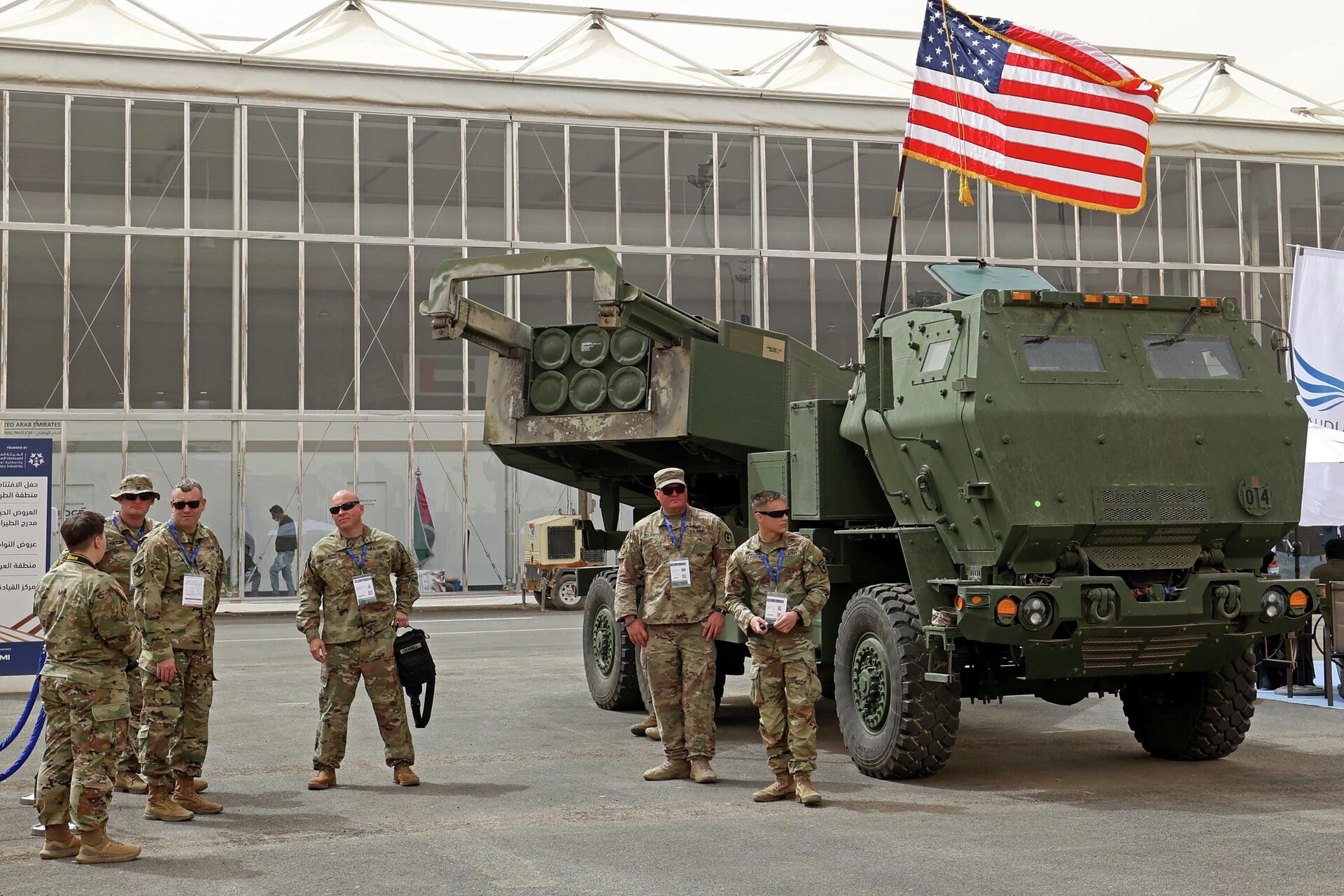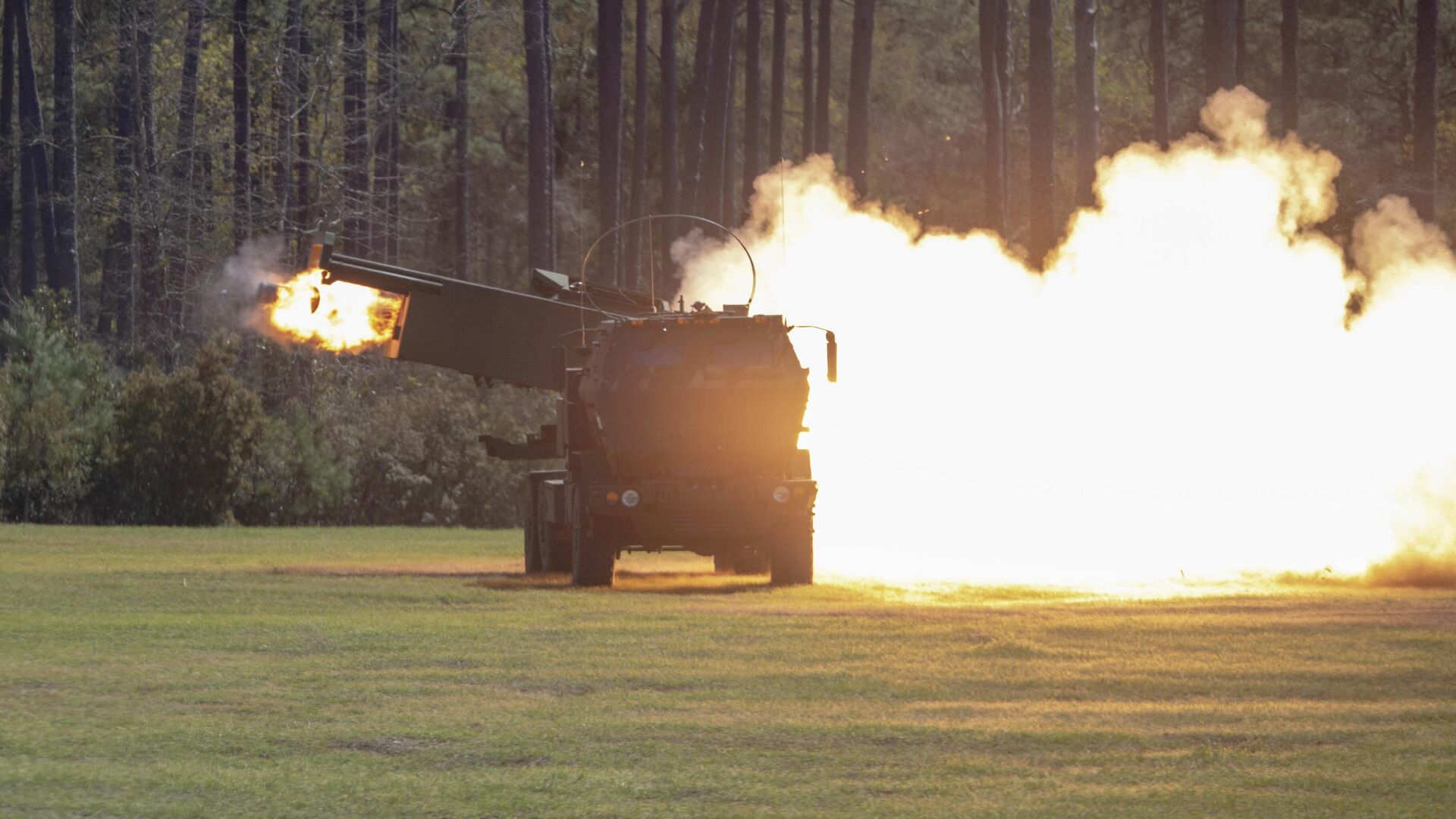What is the 'Game-Changer' HIMARS Rocket Artillery Biden is Sending to Ukraine?
18:24 GMT 01.06.2022 (Updated: 17:06 GMT 20.04.2023)
Subscribe
On Wednesday, US President Joe Biden announced a new military assistance package for Ukraine amid that country’s recent territorial losses to Russian forces and their allies in the Donbass. Among the weapons in the package is a multiple-launch rocket system, HIMARS, that can carry longer range missiles.
"Today, I am announcing a significant new security assistance package to provide timely and critical aid to the Ukrainian military," Biden said in a statement. "This new package will arm them with new capabilities and advanced weaponry, including HIMARS with battlefield munitions, to defend their territory from Russian advances."
The Pentagon added that the US had pre-positioned the HIMARS in Europe for rapid delivery to Ukraine. The initial tranche of HIMARS will be four. Under Secretary of Defense for Policy Colin Kahl later said that the Pentagon had decided to honor Kiev's request for the advanced weaponry because the three-month conflict has "become an artillery duel"; the HIMARS system has superior range to Russian multiple launch rocket systems (MLRS).
The M142 High Mobility Artillery Rocket System (HIMARS) is a powerful wheeled launcher system that’s seen as the lighter alternative to the older, tracked M270 MLRS. It debuted in 2010 and is today built by defense giant Lockheed Martin.

(FILES) In this file photo taken on March 06, 2022 US military personnel stand by a M142 High Mobility Artillery Rocket System (HIMARS) during Saudi Arabia’s first World Defense Show, north of the capital Riyadh. -
© AFP 2023 / FAYEZ NURELDINE
The launcher truck can carry either six smaller rockets or one larger missile, with most of their ammunition being interchangeable with that used by the M270. A major difference is that HIMARS is small enough to fit inside a C-130 transport aircraft, and can have targeting information fed to it by an F-35 Joint Strike Fighter’s computer system.
Biden has said the US will not give Ukraine weapons with which it could attack Russian territory. The HIMARS’ regular M30/31 rockets can reach 42 miles away, but its weapons have been steadily upgraded, with its large MGM-140 Army Tactical Missile System (ATACMS) capable of striking targets 190 miles away. In October, a US Army test-firing of the Precision Strike Missile (PrSM), which is intended to replace the ATACMS, exceeded its anticipated maximum range of 310 miles.
That number isn’t arbitrary: before the US pulled out of the Intermediate-Range Nuclear Forces (INF) Treaty in 2019, it was the maximum allowed range for land-based missiles that the US or Russia could develop. The treaty banned missiles with ranges between 310 and 3,420 miles (500 and 5,500 kilometers, respectively) after the US stationed Pershing II missiles in Europe with a flight time to Moscow of just six minutes, dramatically increasing the risk of nuclear war.

III Marine Expeditionary Force depicts the High Mobility Artillery Rocket System through an infographic, showing basic information and vectored images on Okinawa, Japan, June 7, 2021. This graphic illustration was created using Adobe Illustrator and Adobe Photoshop
Within two weeks of the US unilaterally leaving the INF Treaty, it began testing missiles that violated the treaty’s parameters, including a ground-launched variant of the Tomahawk cruise missile capable of being fired by Aegis Ashore systems. Two such systems have been built in the years before in Romania and Poland, to which Moscow protested but which the US assured them could only fire defensive missile interceptors.
Removing those sites or allowing Russian inspections of them to verify their purely defensive nature was part of the negotiations in early 2022 that preceded Russia’s special military operation in Ukraine, as the systems threatened to cross a “red line” laid by the Kremlin to defend its security interests in the region.
Another red line was the ability for Ukraine to serve as a NATO base from which to attack Russian soil; it should be noted that a PrSM fired from a HIMARS system in the northeastern Ukrainian city of Shostka would be able to strike Moscow, the Russian capital.
This is why Russian Foreign Minister Sergey Lavrov slammed the US giving HIMARS systems to Kiev as a “direct provocation.”

